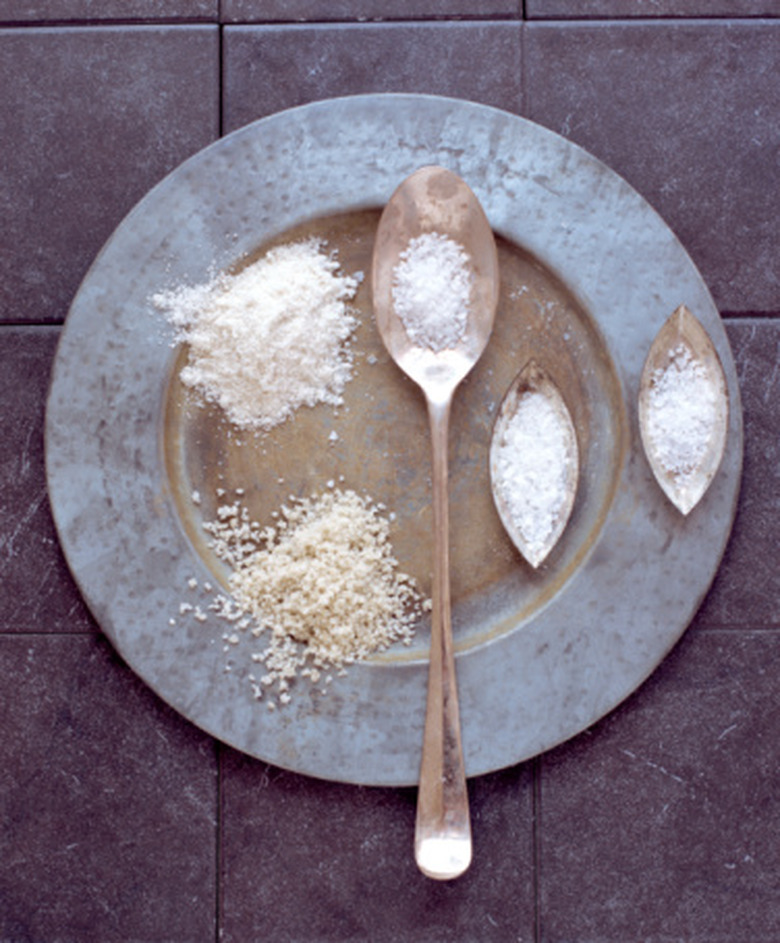Kids' Density Experiments With Salt, Water & Eggs
The more molecular matter contained in an object, the higher its density and the more it weighs. Salt water is denser than pure water because the sodium and chlorine molecules are broken down into ions and are attracted to the hydrogen and oxygen molecules. More suspended particles — or matter — are therefore contained in the same volume of water. This explains why it is so difficult to submerge in the Dead Sea or a flotation tank.To demonstrate this principle, you can conduct a few simple experiments in your kitchen or classroom by using ordinary tap water, salt and two eggs.
Floating Egg
Floating Egg
Pour warm tap water into two large, clear drinking glasses. You will need two cups of water in each glass. Add five tablespoons of salt to one glass and stir briskly until all the salt has dissolved. Table salt will work, but the additives will make the water cloudy so it is preferable to use pickling salt or Kosher salt. Gently lower one raw egg into each glass and observe the difference in flotation between the glass with salt water and the glass with plain water.
Suspended Egg
Suspended Egg
Mix up a saturated salt solution of five tablespoons of salt added to two cups of water. Fill a large glass about half full of this solution. Then carefully and slowly pour ordinary tap water down the sides of the glass until it's full. Gently slide an egg into the water. Where does the egg float?
Rising Egg
Rising Egg
Measure five tablespoons of salt and pour them into the bottom of an empty glass. Add just enough warm water to form a sticky paste at the bottom. Then, as above, slowly and carefully pour warm water down the sides of the glass until it is full. It is important not to disturb the salt paste on the bottom. Gently lower the egg into the water. Where does it come to rest? Record its position on the side of the glass with a marker. Put the glass where it will not be disturbed and continue to monitor the position of the egg. What happens over time?
Conclusions
Conclusions
You will have observed in the Floating Egg experiment that the egg floats in the salt solution but that it doesn't float in the pure tap water. Yet another variation would be to submerge the egg after adding only one tablespoon of salt, then two, and three to find the point where the density is high enough to float the egg. In the Suspended Egg experiment you can see that the egg floats at the top of the salt water layer and rests at the bottom of the tap water layer. Over time, as the layers mix, the egg should sink. As the layers mix, the solution becomes less dense and less able to resist the weight of the egg. The Rising Egg demonstrates the same principles in a slightly different way. Over time the egg rises in the glass. This is because the salt gradually dissolves into the tap water in the layer above, slowly increasing the salinity and therefore the density of the water. These experiments demonstrate clearly that salt water has a higher density than pure water.
Cite This Article
MLA
Rush, Tricia. "Kids' Density Experiments With Salt, Water & Eggs" sciencing.com, https://www.sciencing.com/kids-experiments-salt-water-eggs-8536249/. 24 April 2017.
APA
Rush, Tricia. (2017, April 24). Kids' Density Experiments With Salt, Water & Eggs. sciencing.com. Retrieved from https://www.sciencing.com/kids-experiments-salt-water-eggs-8536249/
Chicago
Rush, Tricia. Kids' Density Experiments With Salt, Water & Eggs last modified March 24, 2022. https://www.sciencing.com/kids-experiments-salt-water-eggs-8536249/



